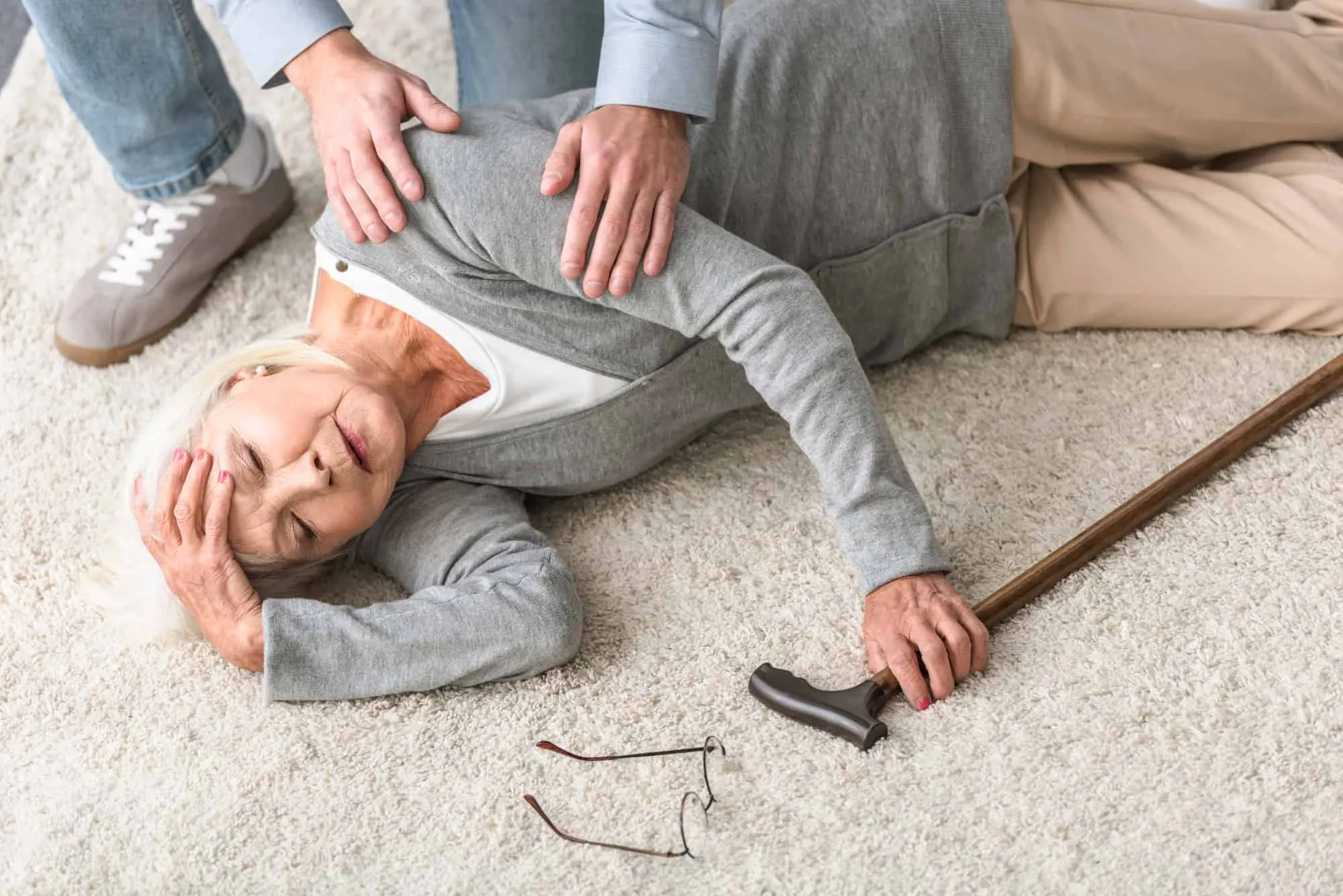
With physical therapy, your balance problems can be treated to help decrease your fall risk and prevent serious injury.
Physical Therapists are trained to understand which body systems are out of whack and how it needs to be addressed.
Let’s look further into how balance issues develop, how we can diagnose where the balance issues come from and what it would look like to do physical therapy for balance problems.
How Do Balance Issues Develop?

We have three major balance systems in our bodies. The brain receives input from these systems (the inner ear, vision and body awareness) and sends that information to our muscles to make postural changes to stay upright and balanced.
Inner ear (vestibular system): The inner ear provides the brain with information about spacial awareness, motion and head movement. It stabilizes our head and body during movement to help us maintain posture and balance. Inner ear problems can develop from aging, trauma, poor nutrition or other diseases.
Vision: Our eyes help us to navigate our physical worlds. They tell us a lot when it comes to our position and what is around us. As we age, our vision can deteriorate and our eyes develop poor tracking.
Awareness of body position (proprioception): Our muscles and joints have sensory receptors that send detailed information to the brain about how we are moving and how we need to respond to certain movements. Muscle strength and flexibility, as well as joint mobility aid in our ability to stay upright. Sedentary lifestyles can cause muscle strength and flexibility to deteriorate. Disease, such as diabetes, can also affect muscles and joints.
Watch this video to understand more about how we test for these 3 systems:
*The Heart: Our cardiovascular system can cause balance problems if not treated properly. One can feel lightheaded/dizzy when sitting or standing up if there is a sudden drop in blood pressure. You are more likely to faint or fall in this situation. Heart problems can occur from disease and dehydration.
What Does Physical Therapy Evaluation To Tackle Balance And Dizziness Look Like?

Your physical therapist will conduct a detailed evaluation that includes your health history and questions about your balance.
We will direct the evaluation based on your answers to questions about your imbalance.
Here are a few questions you may be asked:
Do you feel imbalanced or dizzy with head movement or rolling over in bed?
Do you have a fear of falling or have you fallen recently?
Do you feel unsteady when you stand up?
Are you swaying/leaning while sitting, standing or walking? Do you feel like you need to hold onto something while walking?
Do you have difficulty picking up your feet or are you tripping?
Has your vision changed or do you have trouble walking in dimly lit places?
Are you lightheaded?
If you answered yes to any of these questions, you would be a great candidate for a skilled physical therapy evaluation. The evaluation would include tests to assess your physical abilities of movement, coordination, strength, balance and visual tracking. Your physical therapist will be able to team up with other physicians for further testing if necessary to rule out other conditions.
Did You Answer ‘Yes’ To Being Dizzy Or Imbalanced?

The single most common cause of dizziness that physical therapists treat in the clinic is vertigo or BPPV. You may be wondering, what is vertigo exactly?
The inner ear, at the vestibular apparatus, has crystals that break free and fall into one of three semicircular canals (anterior, posterior, horizontal) which changes the canal’s response to gravity during movement. Typically, this type of vertigo happens with a change in head position (lying down, rising, rolling over in bed, bending over, looking up) and is short-lived (less than a minute).
With the help of a skilled physical therapist, the specific canal that these crystals have fallen into can be identified and repositioned into the vestibular apparatus. Once the crystals have been repositioned, usually the dizzy/imbalance symptoms go away. You may have some residual feelings of unsteadiness that can be addressed through exercise and activity.
What Type Of Test Might Be Performed In A Physical Therapy Balance Examination If I Answered ‘Yes’ To Falling Or Having A Fear Of Falling?
Your physical therapist would first look at your general strength and range of motion.
To test lower limb strength and balance, your physical therapist will have you perform a chair stand test (sit to stands) , a four-stage balance scale and a modified clinical test of sensory interaction in balance that involves different foot positions while balancing.
You may also be asked to perform a timed up and go test. This test requires you to stand up from a chair, walk 10 feet, turn around, and go sit back down.
There is normative data for specific age groups that will help your physical therapist determine if you need an assistive device and how to direct your activity/exercise program for strength and balance.
Losing strength can affect how we react to certain situations to maintain our balance. If we don’t have the core strength or leg strength to react to the body’s motions, we can easily lose our balance.
Did You Answer ‘Yes’ To Having Visual Changes Or Trouble With Walking In Dimly Lit Places?

During a physical therapy exam, you will be taken through two tests that assess how your eyes track an object and how your eyes can remain focused with head movement. If your physical therapist notes you have difficulty with either of these, you will be taken through a series of exercises to help create compensatory eye movements so that you can stabilize your gaze.
If you have noticed that your vision is changing, getting worse, it would be best to get an eye exam from your optometrist if you haven’t already. They can also help diagnose a condition that needs attention and potentially get you the right prescription.
A helpful tip would be to put a motion sensored night light in your bedroom, just in case you have to get up in the middle of the night. This will help you see better and navigate your bedroom to decrease your risk of falling at night.
What Would It Look Like To Do Physical Therapy For Balance?

You and your physical therapist will work together to help create a program that is best for you and your goals.
During a treatment session, you will be challenged. Your balance will be tested and tried in a safe and controlled environment where we can start to make improvements and help you gain the confidence you need to accomplish your goals.
This could mean that you come to see your physiotherapist regularly for a few weeks, but as you progress through your activities and become more confident in your balance, your plan of care will become more independent.
Check out 5 top balance exercises that you can try from home.
Are you interested in getting started? Get in touch with us through our contact page. Then be sure to apply for your free Discovery visit, where we can answer all your questions and help map out a recovery plan for you.


